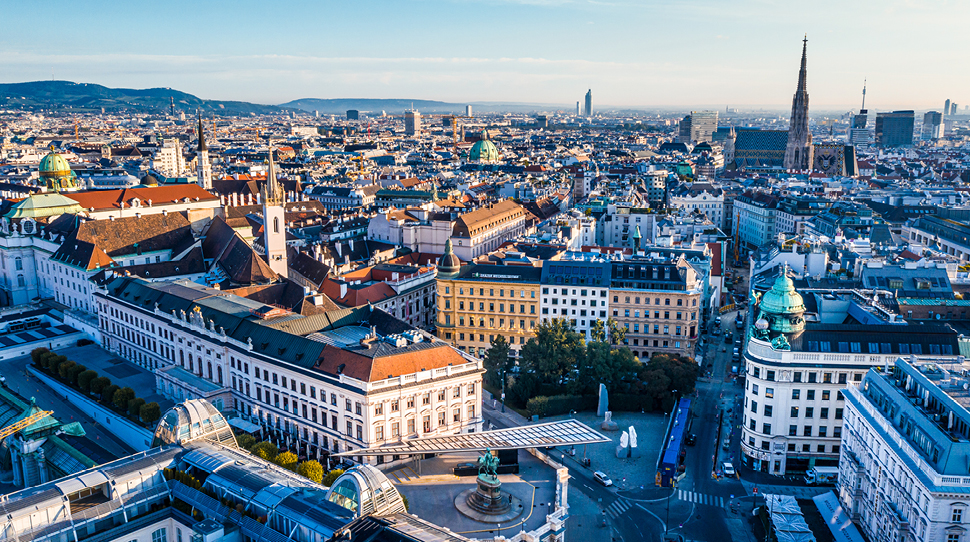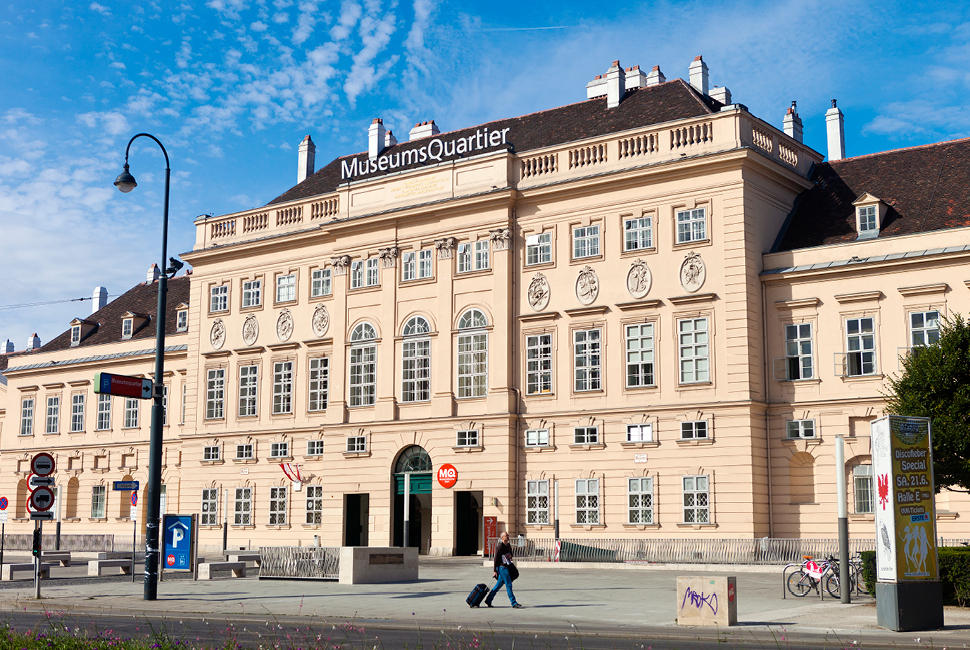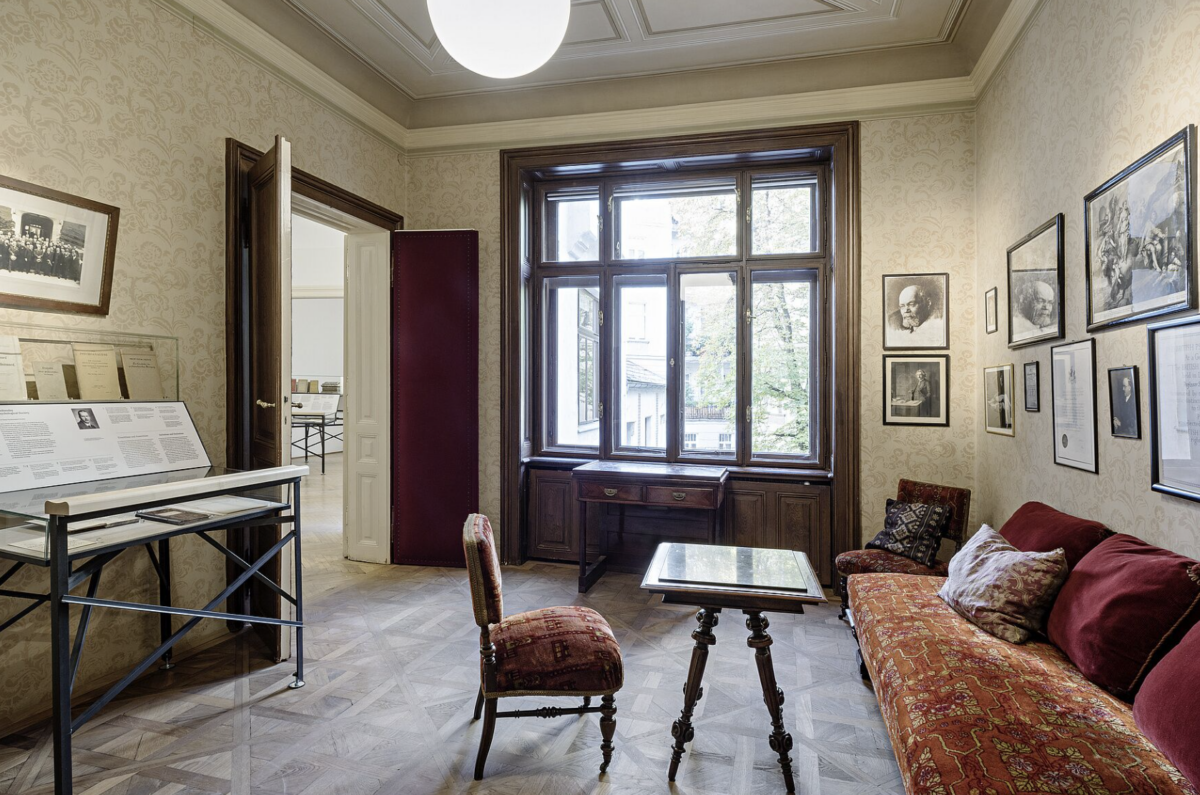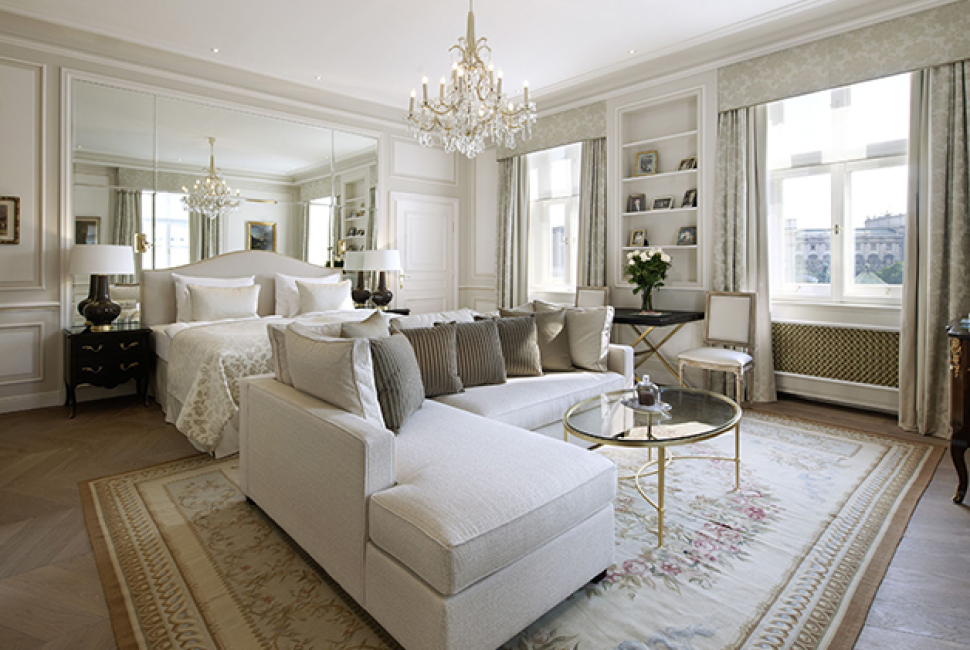

If Vienna isn’t on your must-see European city list, it should be. Austria’s capital city is a sensorial feast on the Danube River. Stunning ancient architecture lines the streets; classical music concerts provide a soundtrack; Habsburg-era palaces lend the city a noble air; and eating well, from simple sausage stalls to top restaurants, is a given.
In fact, Vienna has endless must-see sites and must-try foods, but we’ve narrowed it down to six essential experiences.

Get Cultured
As the capital of the Habsburg Empire and, later, the center of European high society during the city’s Golden Age, Vienna is a culture aficionado’s playground. For example, The Vienna Museum Quarter is one of Europe’s most extensive museum complexes, with 60 cultural institutions that offer something for everyone. On the music front, the many famous composers who worked in Vienna, like Mozart and Beethoven, left an enduring legacy. You can find classical music concerts almost every night of the week, but the most beloved venue is the Vienna State Opera House.
After a four-year renovation, the Wien Museum reopened in late 2023 and explores the city’s history. The museum exhibits iconic memorabilia, like a floating 1.5-ton whale sculpture that was once on the roof of a now-shuttered historical restaurant.
If quirky museums are more your beat, don’t miss The Third Man Museum, a treasure trove of artifacts from the 1949 film starring Orson Welles that was shot in Vienna. From snow globes to other globes, Vienna’s collection of wonderfully weird museums is impressive.
Eat Your Vegetables
Meat lovers will feel right at home in Vienna.Relish a käsekrainer, the city’s legendary cheese-filled sausage, at a traditional stand after an opera night. Or, sample Viennese cuisine’s star, the wiener schnitzel — a very thin, breaded and fried veal cutlet — at a traditional bistro (or gauthaus) like Rebhuhn.
In contrast, Vienna’s recent reputation as Europe’s most vegetarian-friendly city is no rumor. The most recognized vegetarian restaurant is TIAN, where chef Paul Ivić turns plants into art. There are plenty of farm-to-table restaurants where vegetables are the star, such as Meinklang Hofladen. Just outside of the city, Meinklang Hofladen serves a three-course lunch featuring produce harvested from the farm that’s wonderfully paired with the restaurant’s own inventive biodynamic wines.
Try Urban Wine Tasting
Although Vienna might not be Europe’s best-known wine destination, the city does have two unique claims to fame: it’s the only capital in the world to produce substantial quantities of wine within its city limits and it creates its own specialty wine, Gemischter Satz. A blend of up to 20 grape varietals, this white wine made for ages as “pub wine” is having a moment, as are locals’ thirst for natural pours. Plenty of progressive restaurants in Vienna, like MAST, which two sommeliers own, keep Gemischter Satz. Head to a new natural wine bar in the seventh district, R&Bar, to try it and many other exciting Viennese options.
Also unique to the region are heurigers (or wine taverns), where young wines are served with hearty Austrian eats. Within a 15-minute drive from the city center, Der Hirt is a favorite heuriger among locals for its various pours and incredible views. Perched on a steep hillside overlooking vineyards and the Danube River, Der Hirt serves elevated Austrian fare and delightful young wines from local grape varieties. If you visit in September or October, don’t miss sturm, a delicious, slightly fermented, low-alcohol grape juice. During sturm season, this bubbly grape juice is also available in many restaurants and pubs around town.
Go to a Ball
Mingle with local celebrities and foreign dignitaries at one of the 400-plus balls hosted annually from January to March throughout the city during the Viennese Ball Season. This glamorous tradition dates back to the 18th century and allows you to break out your waltzing and dress up in formal wear. (Don’t worry, no Bridgertown-style costumes are needed.)
Even if you can’t score tickets to the Vienna Opera Ball — the event of the season since 1877 — the Philharmonic Ball and the Blumenball are excellent alternatives. If you haven’t three-stepped since elementary music, plenty of dance schools offer speedy waltz lessons before the big event.

Tour Sigmund Freud’s Home
Recently renovated and expanded, the Sigmund Freud Museum — the home and office of the famous psychotherapist for 47 years — offers insights into Freud’s inner sanctum. (Fun fact: Vienna’s nickname, “The City of Dreams,” honors him.) Highlights of the Sigmund Freud Museum’s interactive tour include the office where he saw patients, video and audio recordings of Freud and hand-written letters to colleagues and family. The museum also dedicates a substantial footprint to Anna Freud, his youngest daughter and renowned psychoanalyst.
In the same Serviten Quarter neighborhood a few blocks over, you can stroll the grounds of the Liechtenstein Garden Palace. Prince Adam of Liechtenstein’s incredible Baroque- and Renaissance-era art collection inside is available to see by appointment only. Also nearby is Vienna’s most Instagrammed staircase, the Strudlhofstiege.
Get Spoiled by Grandma
Vienna’s café culture plays a vital role among locals, so much so that it has been listed on the UNESCO Intangible Cultural Heritage list since 2011. Expect to stay awhile, read the paper and even play pool at historic 19th-century-era cafés (they resemble American diners but are elevated in design and offerings) like Cafe Ritter or Cafe Sperl. But a relatively new and hip address to hit the scene is Vollpension. Serving pastries baked by grandmothers (and grandfathers, too) that use family recipes, Vollpension feels like your grandma’s living room, complete with doilies, knickknacks, antique furniture and framed family photos. The café’s greater mission is to facilitate connection between the generations and combat elderly poverty.
Another very trendy spot for walk-up coffee is Fenster Cafe. Don’t miss the Fensterccino, a photogenic cappuccino served in a waffle cone.

Where to Stay
Vienna is easy to get around, either by foot or by complimentary city bike. Still, you may want to book a hotel in the neighborhood you plan to spend the most time in. Located in the city center across the street from the opera house, Forbes Travel Guide Four-Star Hotel Sacher Wien delivers palatial vibes with modern comforts. It’s also home to the famous Sacher torte, a layered chocolate cake with apricot jam.
Forbes Travel Guide Recommended Hotel Sans Souci Wien is in the trendy Arts District, across the street from the aforementioned Vienna Museum Quarter, that offers an ideal mix of historical and contemporary design.
Also in the city center, The Amauris is a stylish new boutique hotel whose staff goes above and beyond to make you happy.
